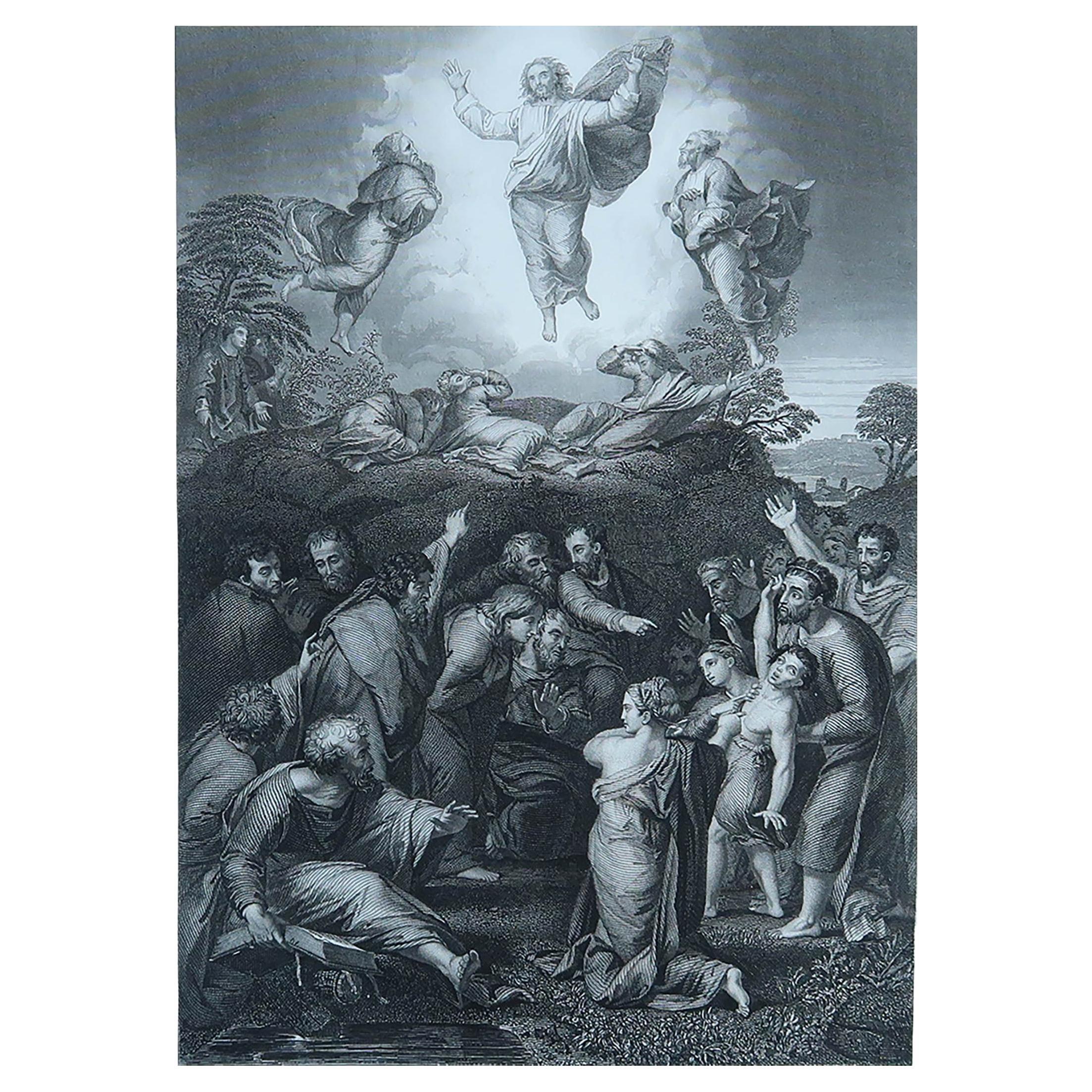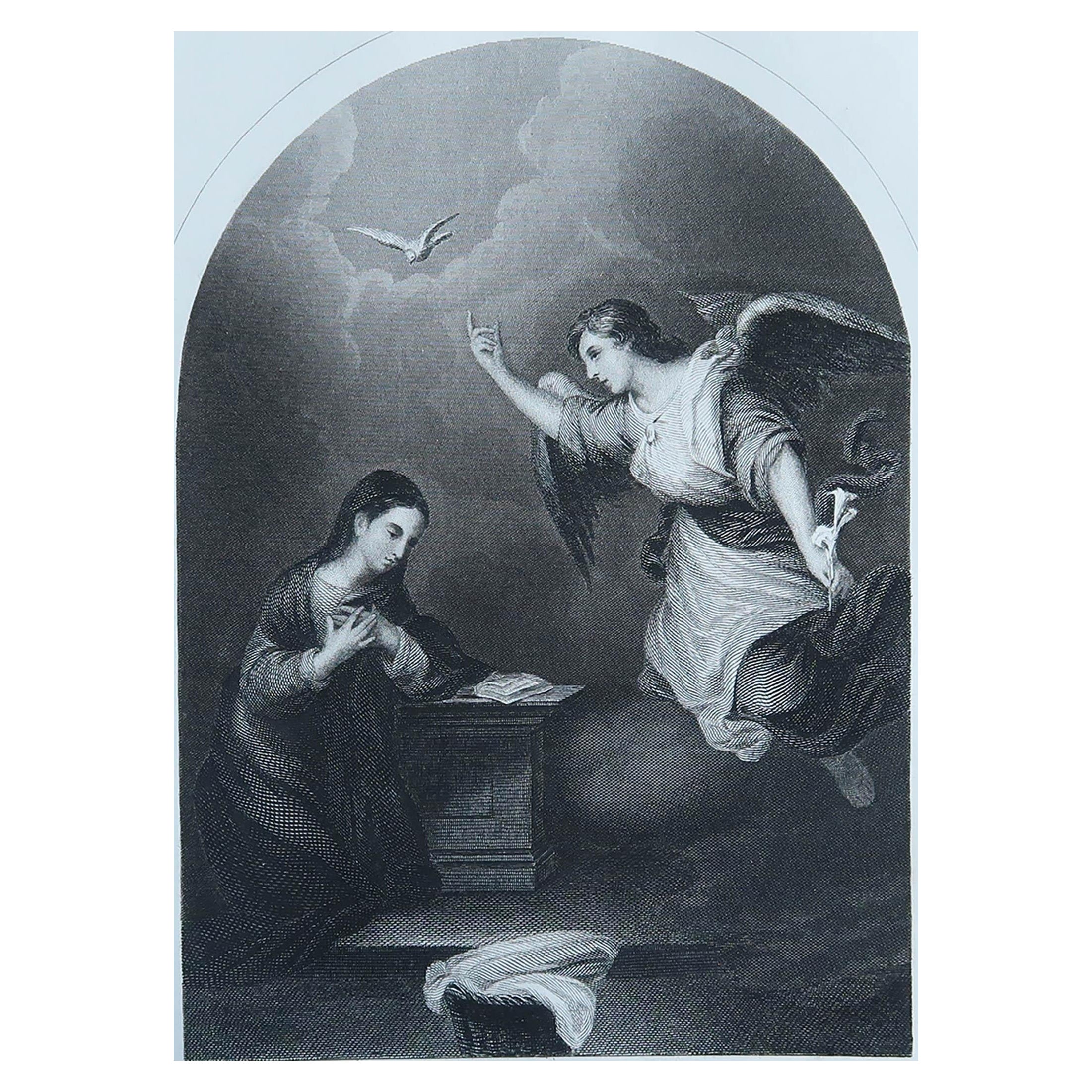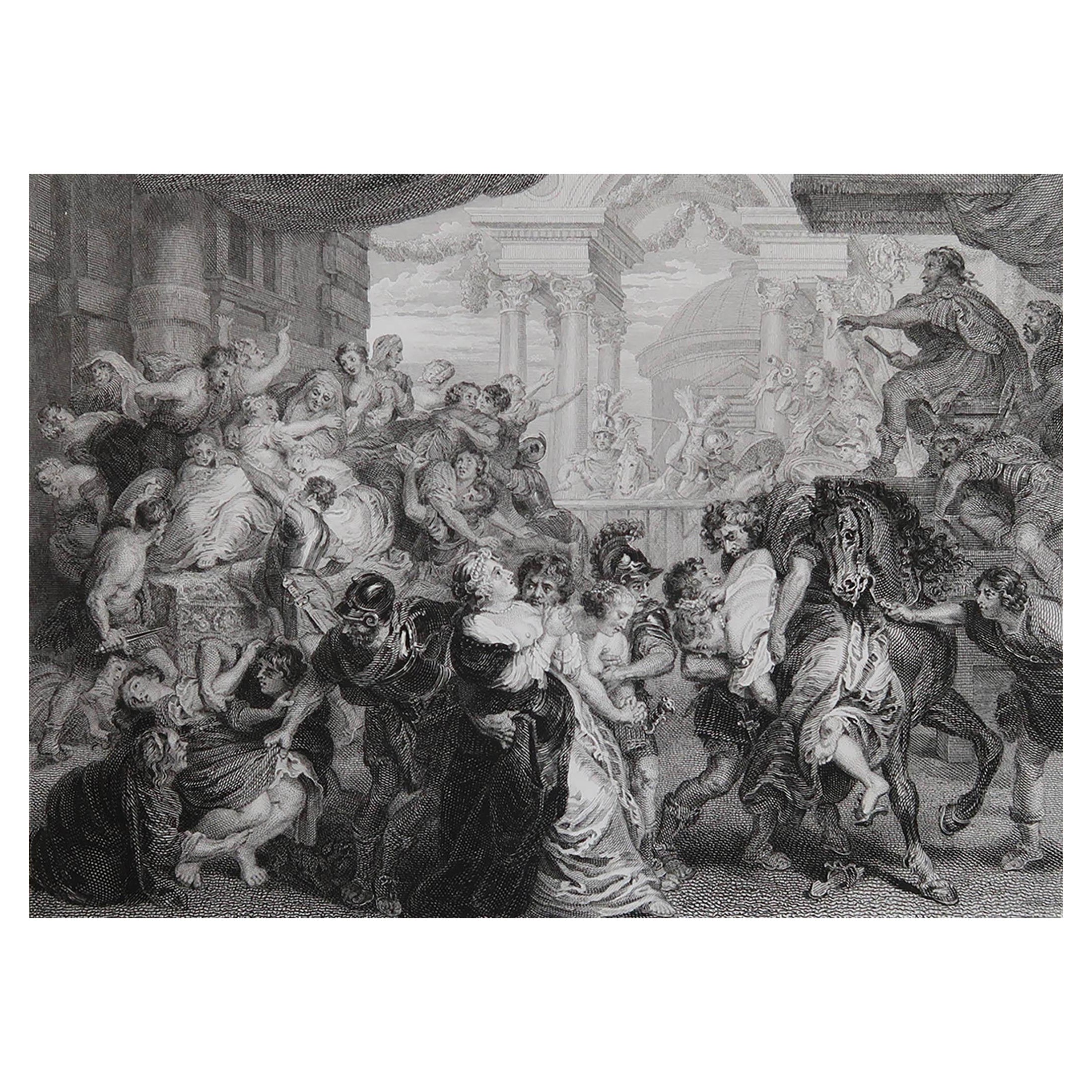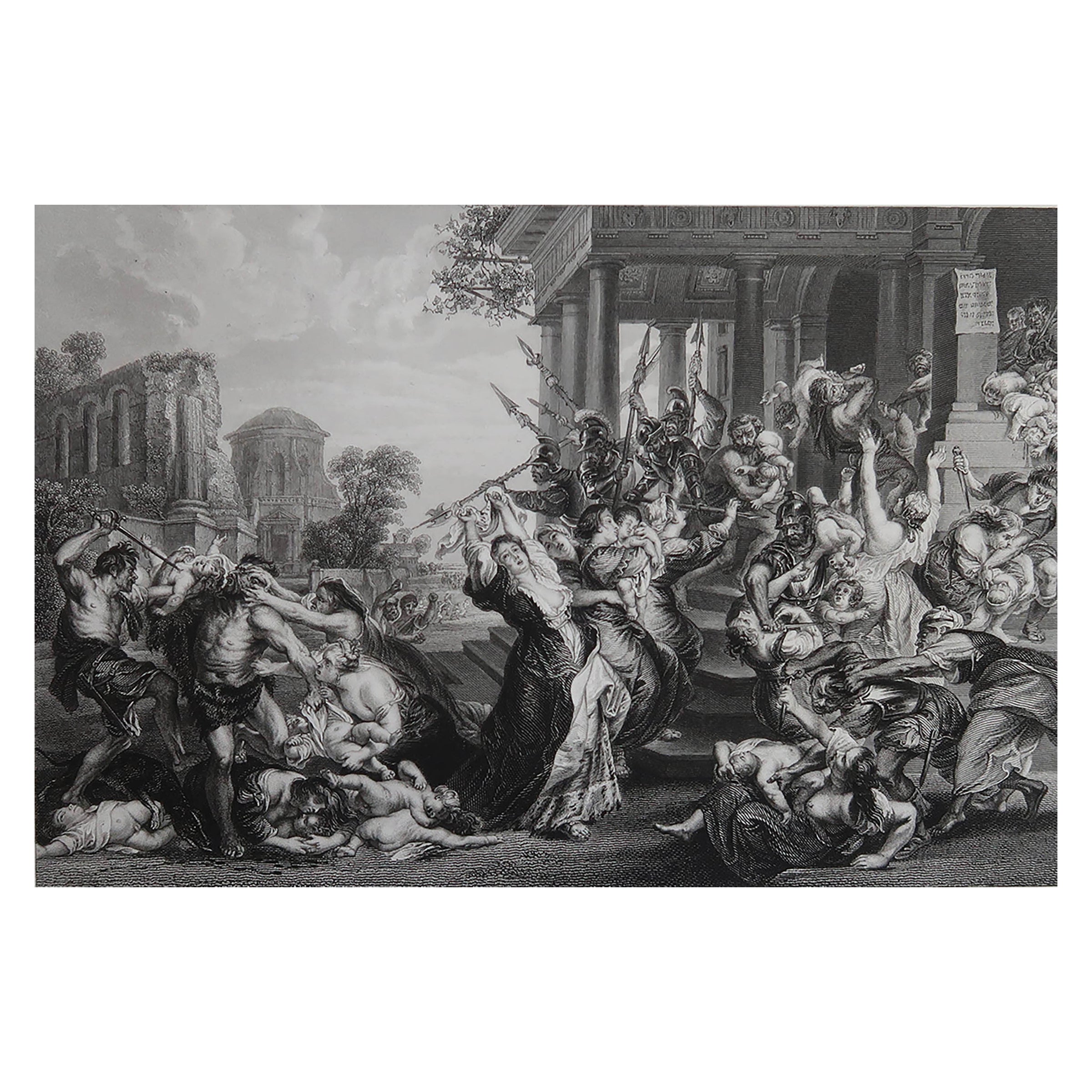Items Similar to ORIGiNAL 1643 THE TWELVE MONTHS OF THE YEAR AFTER JOACHIM VON SANDART THE ELDER
Want more images or videos?
Request additional images or videos from the seller
1 of 19
ORIGiNAL 1643 THE TWELVE MONTHS OF THE YEAR AFTER JOACHIM VON SANDART THE ELDER
About the Item
Royal House Antiques
Royal House Antiques is delighted to offer for sale this super rare and highly collectable suite of twelve original Copper plate engravings dating to 1643 by Ioachimus Sandrart after the original by Joachim Von Sandrart the Elder depicting the months of the year
These are a suite that will never come up for sale again, dating to 1643 they are 381 years old, the copper engraving print outlines clearly visible, each piece signed to the bottom left Ioachimus Sandart Pinxit and to the bottom right what looks like I Suijderhoef jculjit
These are a highly coveted and important suite of mid 17th century prints, they wouldn’t look out of place in the finest library or museums
The condition is perfect, they are mounted with full margins, on museum board with golf leaf slips and hand made 22ct gold leaf side edges
Dimensions each
Height:- 53.5cm
Width:- 43.5cm
Depth:- 2cm
Please note all measurements are taken at the widest point, if you would like any additional or specific measurements please ask
Joachim von Sandrart (12 May 1606 – 14 October 1688) was a German Baroque art-historian and painter, active in Amsterdam during the Dutch Golden Age. He is most significant for his collection of biographies of Dutch and German artists the Teutsche Academie,[1] published between 1675 and 1680.
Sandrart was born in Frankfurt am Main, but the family originated from Mons.[2][3] According to his dictionary of art called the Teutsche Academie, he learned to read and write from the son of Theodor de Bry, Johann Theodoor de Brie and his associate Matthäus Merian, but at age 15 was so eager to learn more of the art of engraving, that he walked from Frankfurt to Prague to become a pupil of Aegidius Sadeler of the Sadeler family. Sadeler in turn urged him to paint, whereupon he travelled to Utrecht in 1625 to become a pupil of Gerrit van Honthorst, and through him he met Rubens when he brought a visit to Honthorst in 1627, to recruit him for collaboration on part of his Marie de' Medici cycle. Honthorst took Sandrart along with him when he travelled to London. There he worked with Honthorst and spent time making copies of Holbein portraits for the portrait gallery of Henry Howard, 22nd Earl of Arundel.
Making all of those copies only served to arouse more curiosity in the young adventurer, and in 1627 Sandrart booked a passage on a ship from London to Venice, where he was welcomed by Jan Lis (whose Bentvueghels bent name was "Pan"), and Nicolas Régnier.[4] He then set out for Bologna, where he was met by his uncle on his mother's side Michael le Blond, a celebrated engraver. With him, he crossed the mountains to Florence, and from there on to Rome, where they met Pieter van Laer (whose bent name was "Bamboccio"). After a few years he undertook a tour of Italy, traveling to Naples, where he drew studies of Mount Vesuvius, believed to be the entrance to the Elysian fields described by Virgil. From there he traveled to Malta and beyond, searching for literary sights to see and paint, and wherever he went he paid his way by selling portraits. Only when he was done traveling did he finally return to Frankfurt, where he married Johanna de Milkau in 1637.
Afraid of political unrest and plague, he moved to Amsterdam with his wife in 1637.
In Amsterdam he worked as a painter of genre works, and portraits. He won a very good following as a painter, winning a lucrative commission for a large commemorative piece for the state visit by Maria of Medici in 1638, which hangs in the Rijksmuseum. This piece was commissioned by the Bicker Company of the Amsterdam schutterij, and shows the members posing around a bust of Maria of Medici, with a poem by Joost van den Vondel hanging below it. The state visit was a big deal for Amsterdam, as it meant the first formal recognition of the Dutch Republic of the seven provinces by France. However, Maria herself was fleeing Richelieu at the time and never returned to France. This piece cemented his reputation as a leading painter, and in 1645 Sandrart decided to cash in and go home when he received an inheritance in Stockau, outside Ingolstadt, he sold his things and moved there. He received 3000 guilders for 2 books of his Italian drawings, that according to Houbraken were resold in his lifetime for 4555 guilders.
Though he rebuilt the old homestead, it was burned by the French. He sold it and moved to Augsburg, where he painted for the family of Maximilian I, the Elector of Bavaria. When his wife died in 1672, Sandrart moved to Nuremberg, where he married Hester Barbara Bloemaart, the daughter of a magistrate there. This is where he started writing.
His large 1649 painting Peace-Banquet commemorating the Peace of Münster, now hangs in Nuremberg's town hall.
Any questions please feel free to ask before you bid
- Dimensions:Height: 21.07 in (53.5 cm)Width: 17.13 in (43.5 cm)Depth: 0.79 in (2 cm)
- Sold As:Set of 12
- Style:Charles II (Of the Period)
- Materials and Techniques:Paper,Engraved
- Place of Origin:
- Period:1640-1649
- Date of Manufacture:1643
- Condition:Wear consistent with age and use. Minor fading.
- Seller Location:GB
- Reference Number:1stDibs: LU2823338375842
About the Seller
4.6
Platinum Seller
These expertly vetted sellers are 1stDibs' most experienced sellers and are rated highest by our customers.
Established in 2012
1stDibs seller since 2017
1,711 sales on 1stDibs
Typical response time: <1 hour
- ShippingRetrieving quote...Ships From: United Kingdom
- Return PolicyA return for this item may be initiated within 14 days of delivery.
More From This SellerView All
- Pair of Huge Original Circa 1660 Pierre Mignard '1612-1695' Copper Plate PrintsBy Pierre MignardLocated in GBWe are delighted to offer this exquisite pair of extra large Burr Satinwood framed copper plate prints dating to circa 1660 by the genius that was Pierre Mignard...Category
Antique 1660s English Charles II Decorative Art
MaterialsPaper
- Bazas Signed Print with Original Robert A Campbell Gallery Label to the RearLocated in GBWe are delighted to offer for sale this lovely signed print by Bazas with the original Robert A Campbell gallery label to the rear. A good looking and well made piece, I don't rea...Category
20th Century European Other Decorative Art
MaterialsPaper
- Vintage World Map Mirror Based on the Original by Johnson 1882 Military CampaignLocated in GBWe are delighted to offer for sale this lovely Antique style pictorial plan map of the globe based on the original by Johnson in 1882 This is a very interesting and decorative pie...Category
20th Century English Campaign Maps
MaterialsMirror
- Silver Leaf Foil Wall World Map Engraving Based on the Original Moses Pitt, 1681Located in GBWe are delighted to offer for sale this lovely antique style pictorial silver leaf foil world map taken from and original engraving my Moses Pitt, 1681 This is a very interesting ...Category
20th Century English Modern Maps
MaterialsSilver Leaf
- Sublime Vintage Hand Cavred Wooden Plaque & Documents of the Lion of LucerneLocated in GBWe are delighted to offer for sale this lovely hand carved wall plaque of The Lion of Lucerne and documentation A very good looking and well...Category
Early 20th Century English Arts and Crafts Wall-mounted Sculptures
MaterialsOak
- Pair of Original Signed with Certificates Barry Leighton Jones Oil PaintingsLocated in GBWe are delighted to offer for sale this stunning pair of original Barry Leighton-Jones (1932-2011) salon oil paintings with the original certificates. ...Category
Vintage 1960s English Mid-Century Modern Paintings
MaterialsCanvas
You May Also Like
- Antique Print of the Column of Dilius by Morisot, '1643'Located in Langweer, NLAntique print of the column of Dilius. This print originates from 'Orbis maritimi sive rerum in mari et littoribus gestarum generalis historia' by Claude Barthélemy de Morisot.Category
Antique Mid-17th Century Prints
MaterialsPaper
- Set of Eight Anatomical Lithographs after Albrecht Von HallerLocated in East Hampton, NYSet of eight anatomical lithographs after Albrecht Von Haller. Published by Ashford Press, Sols Point, Clinton, CT. Printed by the Meridan Gra...Category
Late 20th Century Prints
MaterialsPaper
- Original Antique Print After Rubens. The Massacre of The Innocents. C.1840Located in St Annes, LancashireWonderful image of The Massacre of The Innocents Fine steel engraving Published by Fisher. C.1840 Unframed.Category
Antique 1840s English Renaissance Prints
MaterialsPaper
- Original Antique Print After Rubens. The Rape of The Sabines. C.1840Located in St Annes, LancashireWonderful image of The Rape of The Sabines Fine steel engraving Published by Jones & Co.. C.1840 Unframed.Category
Antique 1840s English Renaissance Prints
MaterialsPaper
- Original Antique Print of The Transfiguration After Raphael. Circa 1850Located in St Annes, LancashireGreat image after Raphael Fine steel engraving Published by Fisher circa 1850 Unframed.Category
Antique 1850s English Renaissance Prints
MaterialsPaper
- Original Antique Print of The Garden After Antoine Watteau. C.1850Located in St Annes, LancashireWonderful image after Watteau Fine Steel engraving. Published by Virtue C.1850 Unframed.Category
Antique 1850s English Louis XV Prints
MaterialsPaper





